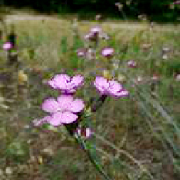All official European Union website addresses are in the europa.eu domain.
See all EU institutions and bodiesGet inspired!
In the Case Study Hub you can explore a selection of case studies that have successfully improved the status of a protected species or habitat due to targeted measures.
Explore how brown bears in Italy had almost died out before the LIFE project URSUS translocated bears from Slovenia to reinforce the local population. Discover the LIFE project HUNDIDI, which raised the population size of the extremely rare lilac flower species Dianthus diutinus from 20,000 to 100,000 individuals. Some case studies even went above and beyond their initial target and improved the population of other species in the process or strengthened the local economy.
The good practice examples presented here offer insights on how successful biodiversity management has been implemented across the EU. Detailed are the main challenges, planned and implemented conservation measures, stakeholders involved, cost and financing of specific actions and the key impacts achieved through protective measures.
The hub currently contains results for 12 case studies and is continuously being expanded to include further inspiring narratives.

Semi-natural dry grasslands and scrubland facies on calcareous substrates (Festuco-Brometalia) in Poland

Water courses of plain to montane levels with the Ranunculion flui-tantis and Callitricho-Batrachion vegetation (3260) and species Rhodeus amarus, Barbus barbus, Lutra lutra, Lampetra fluviatilis, Salmo salar










